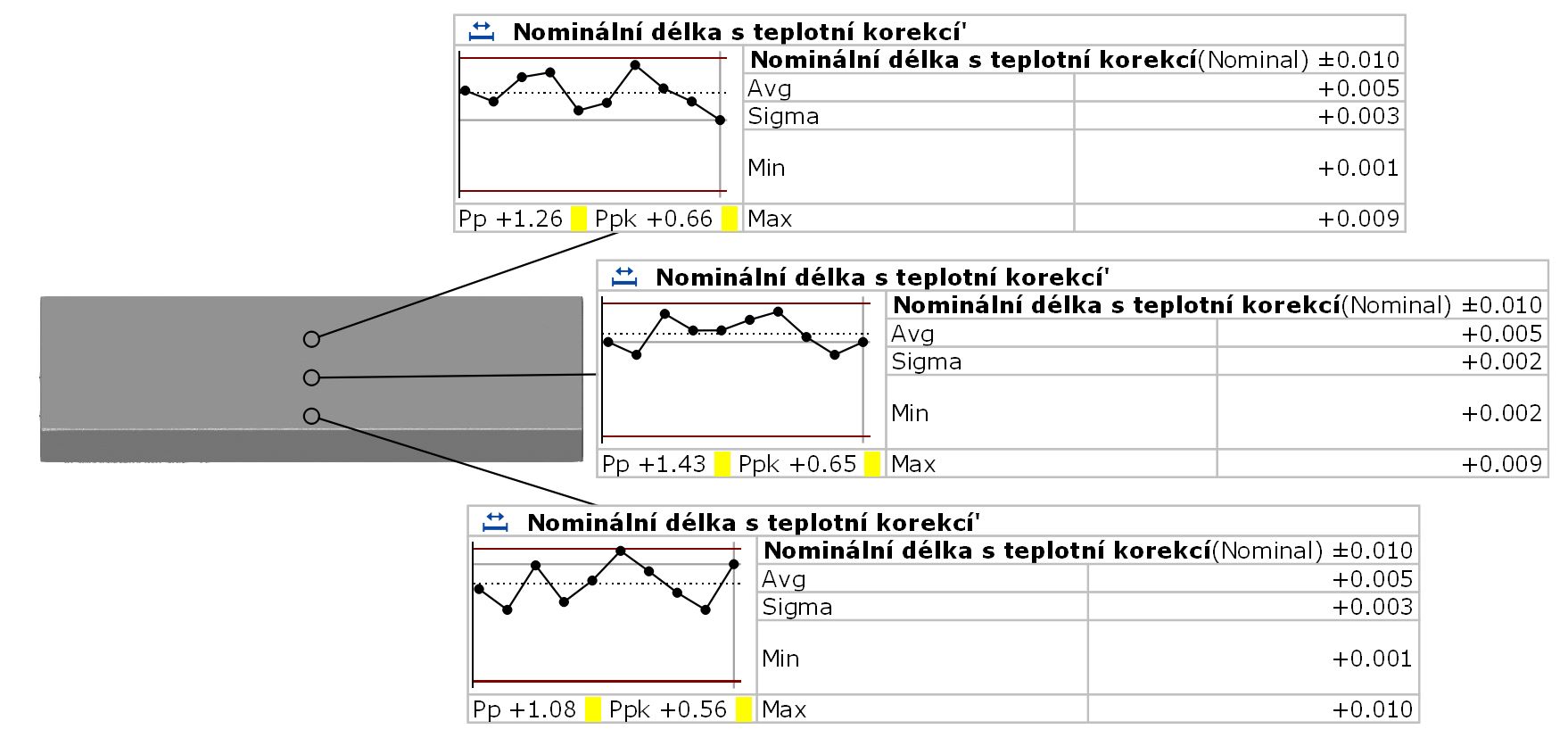HOW THE NEW ATTBLIME® MATTING SPRAYS WILL AFFECT SCANNING ACCURACY

When 3D scanning glossy and translucent parts, optical scanners cannot capture the scanned surface correctly. Therefore, before scanning, the surfaces are matted with spray or airbrush. 3Dees Industries represents ATTBLIME® matting sprays for 3D scanning on the Czech and Slovak market. The offer includes a set of four products, which differ in their purpose for final applications. Three of the sprays are sublimation (the sprayed surface does not need to be cleaned after scanning, the layer evaporates after a certain period of time) and one is permanent. Since the thickness of the layer formed by spraying can affect the accuracy of the measurement, we were interested in the specific effect of the sprayed layer. We will present the results of our analysis in this paper.
Information about the product line
ATTBLIME® has developed a new generation of sublimation scanning spray that leaves no residue and, unlike other available matting sprays, does not contain titanium dioxide (TiO2), adamantane or the dangerous mutagenic n-hexane. Sublimating sprays AB2, AB6, AB24 are based on cyclododecane (CDC). The pigments contained in ABP permanent scanning spray are based on renewable natural raw materials. All products therefore have a minimal impact on humans and the environment.
A great advantage of all ATTBLIME® sprays is the possibility of bonding reference points to the surface of the part after application of the matting spray. The layer formed on the part is so strong that the reference point (sticker) easily adheres to it, which greatly facilitates the preparation before the actual scanning.
In addition to the spray, ATTBLIME® AB2, AB6 and ABP versions are also available as pre-mixed solutions in larger containers (1 and 5 litres) used for airbrush application.
ATTBLIME® AB2
The ATTBLIME® AB2 sublimation spray is primarily designed for small to medium objects and has the thinnest coating of the spray portfolio. The primary ingredient is the aforementioned CDC and uses a mixture of alcohol and hydrocarbons as the solvent. It does not contain any pigment components or harmful ingredients such as ethanol or adamantane. When the spray is applied to the surface of the object, it forms a fine light grey layer that makes it easily scannable for 1-2 hours. The spray will then begin to slowly evaporate evenly, leaving no visible traces of the spray on the surface within 2-4 hours. When multiple layers of spray are applied, the sublimation time is prolonged but the effect on scanning accuracy is increased.
AB2 can be purchased as a 400ml spray with a coverage area of approx. 2.0 - 2.5 m2, or a 1l bottle (AB2-G) for airbrush with a coverage area of approx. 10-15 m2. A 5l variant is also available.
ATTBLIME® AB6
The ATTBLIME® AB6 sublimation spray is the most versatile of the entire portfolio and is designed for objects of all sizes. The primary ingredient is CDC and uses alcohol as the solvent. It does not contain any pigment components. Once sprayed on the object, a white layer is formed that allows easy scanning for 2-6 hours. The spray then begins to evaporate slowly and evenly. No visible traces of the spray are left on the surface within 6-10 hours. Very interesting for application is the 1l version in the form of an airbrush solution (AB6-G), which we also used in our test, the results of which can be found in the next part of the article.
AB6 can be purchased in the form of a 400ml spray with a coverage area of approx. 2.5 - 3.0 m2, or a 1l bottle in the form of an airbrush solution (AB6-G) with a coverage area of approx. 12-16 m2. A 5l pack is also available.
ATTBLIME® AB24
Under the name ATTBLIME® AB24, a spray has been developed to provide temporary protection for sensitive surfaces when working with water and aqueous solutions, water-soluble adhesives or mortars of any kind. This version of the sublimation spray, with a particularly high cyclododecane content, allows users to temporarily preserve objects and paintings, which has applications in areas such as archaeology, restoration and museums.
In particularly demanding conditions of use in industrial 3D metrology, for example at high outdoor temperatures above 30 °C, ATTBLIME AB24 with its uniform and homogeneous spray pattern with a layer thickness of the order of 30 µm can also be used for temporary matting of surfaces.
ATTBLIME® ABP
The ATTBLIME® ABP permanent matte 3D scanning spray differs from comparable products on the market with a special shade of grey "cooperative grey", which has been optimized for optical measurement technology and to achieve the best possible pattern projection contrast during scanning. It contains natural pigments from renewable sources dissolved in alcohol, which also guarantees easy washing of the part with water after scanning. Another major advantage of ABP over conventional chalk sprays is that reference points can be glued directly onto the sprayed layer and that the part can be handled (dry hand or with a cloth glove) after spraying. ABP is used universally on all part sizes and is also available as an airbrush solution (ABP-G), which we tested together with AB6-G and the results can be found in the article below.
ABP can be purchased as a 400ml spray with a coverage area of approx. 3.0 - 3.5 m2, or a 1l bottle as an airbrush solution (ABP-G) with a coverage area of approx. 14-16 m2 or a 5l variant.
ATTBLIME® μSCAN LIQUID
ATTBLIME® μScan liquid has been developed for precise matting of very small reflective or also transparent objects. It is typically used in the dental, jewellery or electronic sector. The application is based on a microbrush, similar to nail polish. The 3 µm thick application layer is very easy to wash off the surface of the part. μScan liquid is available in a 10ml bottle with integrated microbrush.
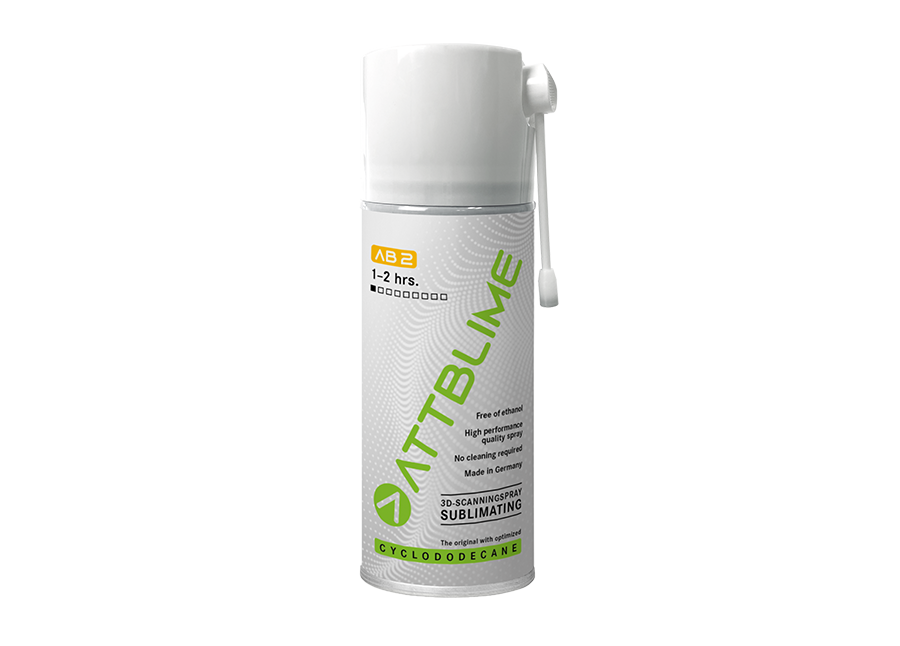
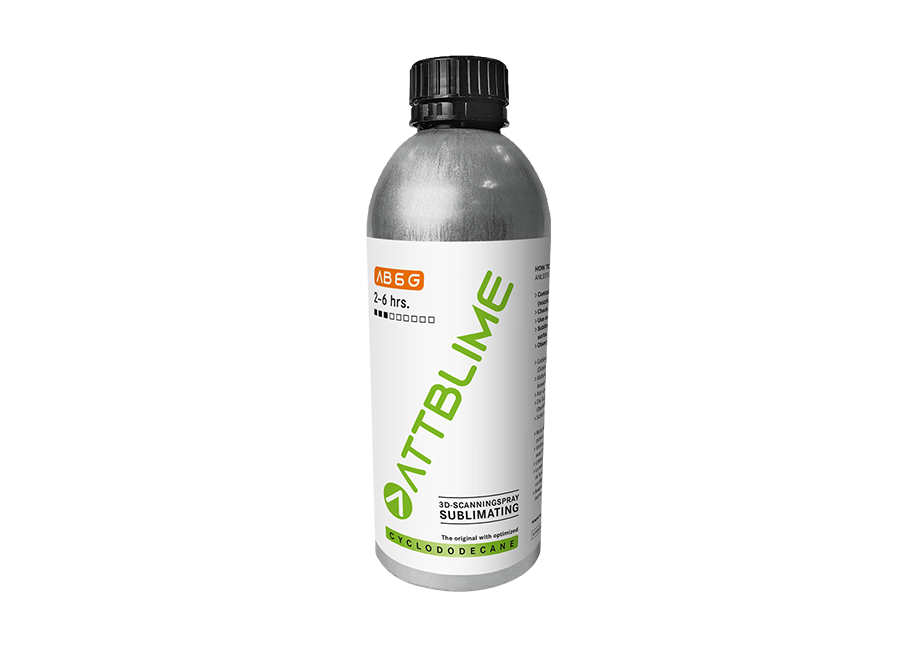
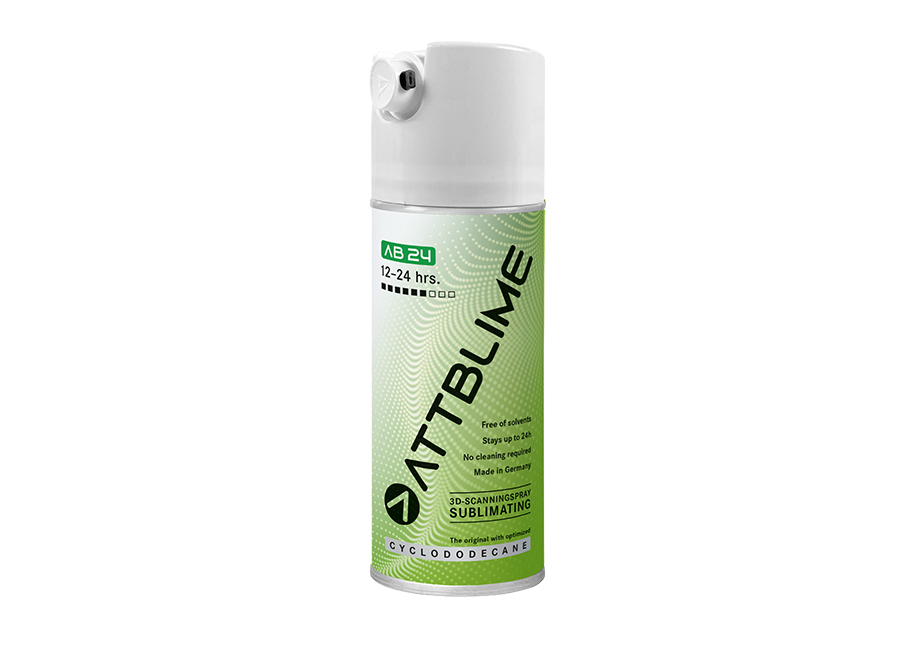
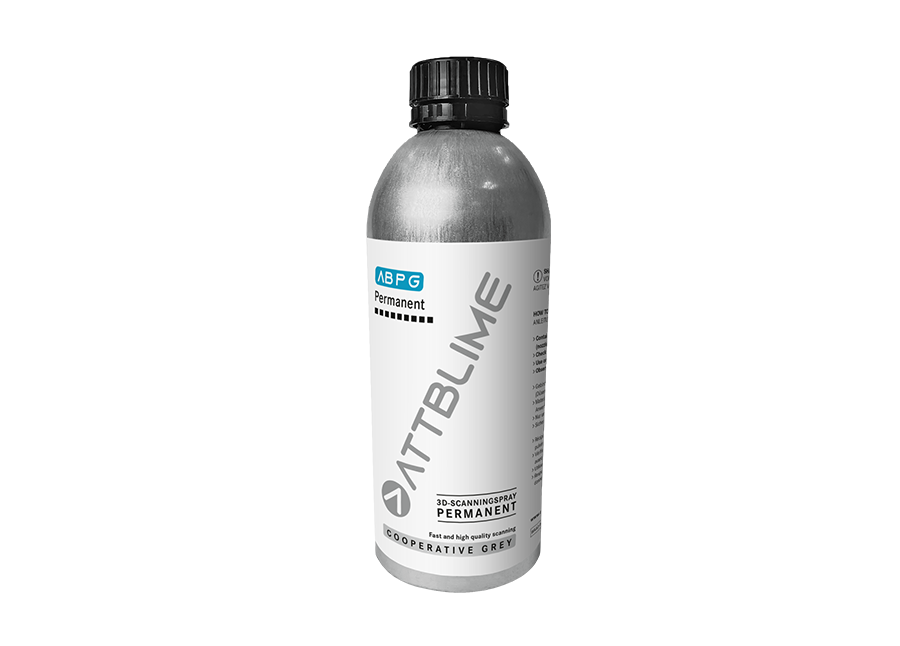
MEASUREMENT OF THE SPRAYED LAYER THICKNESS FOR AB6-G AND ABP-G SPRAYS
The main objective of this measurement was to compare the ATTBLIME® portfolio of matting sprays and to see how they affect the accuracy of digitizing. The measurement itself was carried out on a 100 mm standard – a etalon end gauge with a repetition rate of 10 for each type of matting spray. After each measurement, the etalon was thoroughly cleaned and then a new layer was applied using an airbrush. The results presented also take into account the effect of the thermal length expansion of the etalon material (steel: 1 °C deviation from the calibration temperature of the etalon causes a length change of 0.001 mm per 100 mm). In our testing, the temperature of the standard was 24,7 °C.
A GOM ATOS Q with a resolution of 12 MPx and a measuring volume of MV 100 was used for the measurements.
In order to achieve accurate results, it was necessary to establish and follow a workflow for measuring and preparing the standard. The actual preparation of the standard for scanning was carried out by spraying with AB6-G and ABP-G solutions and an airbrush gun with a nozzle diameter of 0.5 mm. Other factors affecting the accuracy and quality of the scan, such as the choice of the measuring volume, the intensity of the projected light (exposure time), were optimized by experienced operators to achieve the most accurate results.
The preparation of the etalon consisted of two main steps - applying the spray and then gluing 5 reference points with a diameter of 0.8 mm to the etalon. Subsequently, the position of the scanner was set at the optimum distance to the etalon measurement surfaces. A GOM ROT 350 automatic rotary table was used to scan the entire etalon and 12 positions in a range of 360֯. The measurements were then evaluated in GOM Inspect Pro software by comparing them to the nominal calibrated length of the standard.
A total of 10 separate measurements were made for each type of ATTBLIME® solution, from which an overall evaluation was prepared.
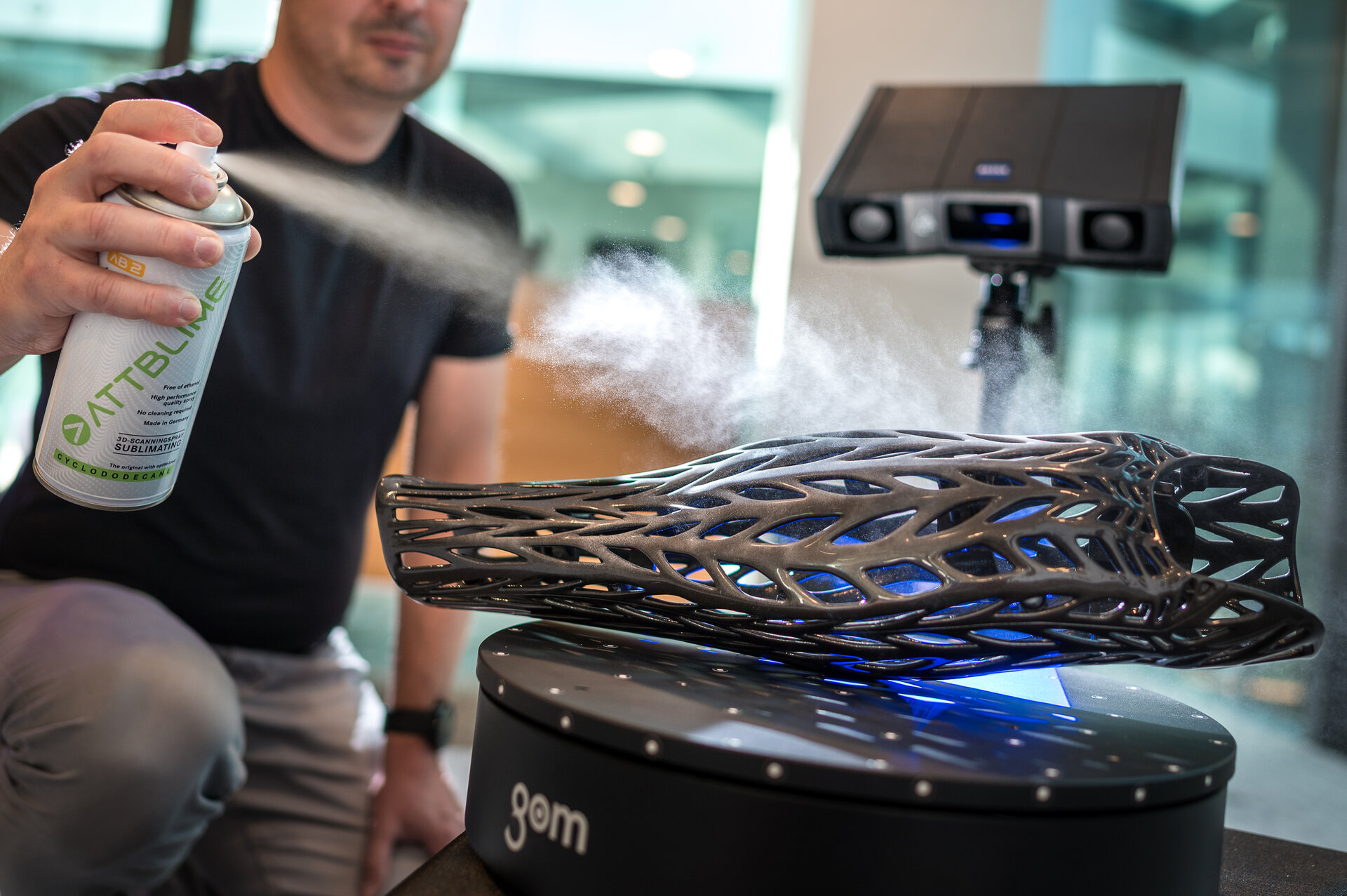
AB6-G MEASUREMENT RESULTS
Fig.: Scanner output - polygonal mesh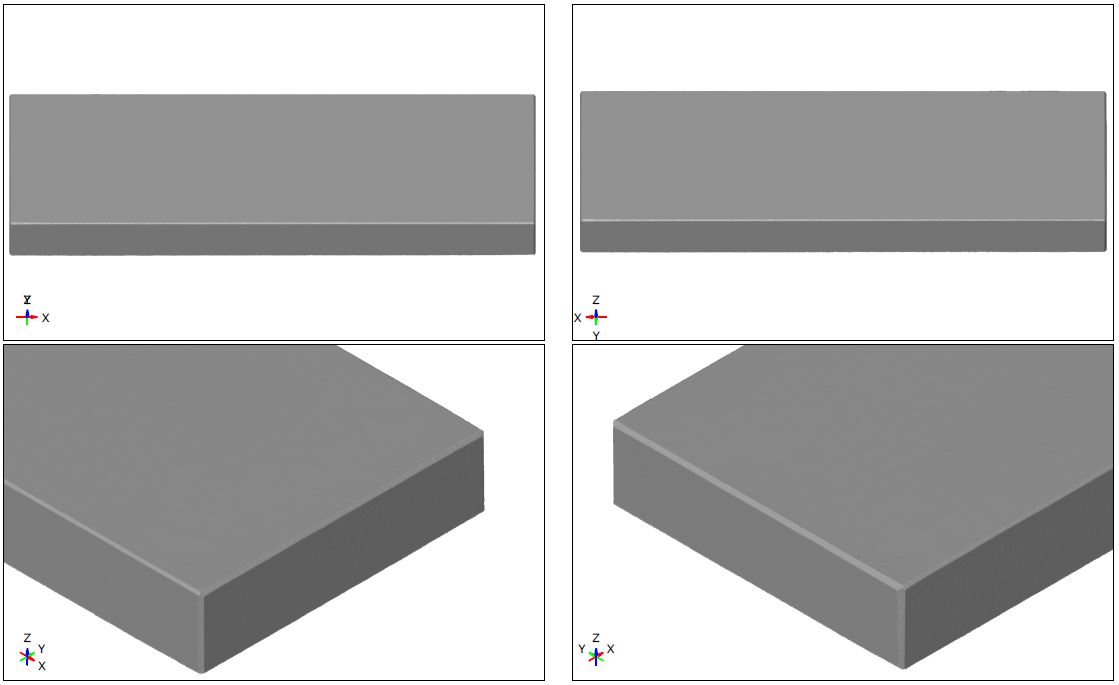 Fig.: Visualisation of measurement result 1
Fig.: Visualisation of measurement result 1
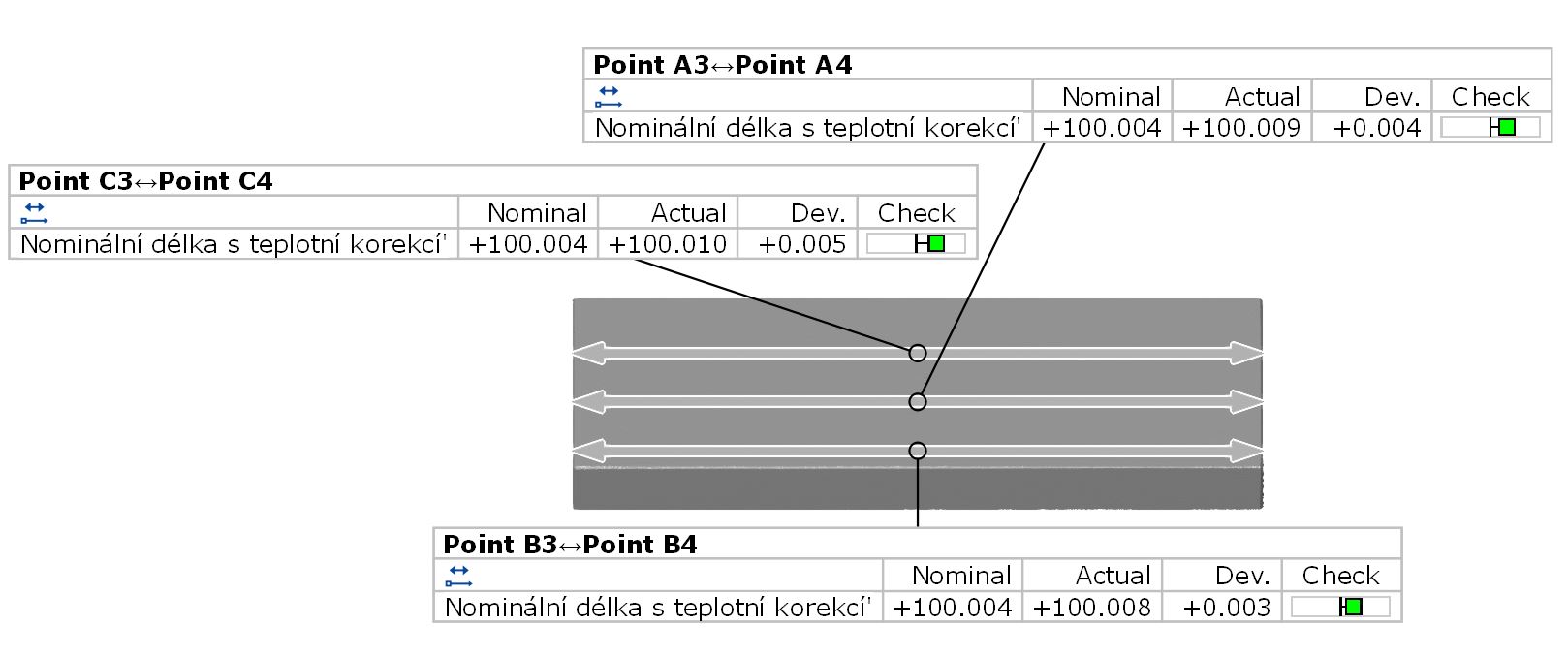
Commentary on the results
Evaluation of the AB6-G sublimation solution spray layer measurements at 3 different etalon locations showed and confirmed the manufacturer's data that the deposited layer is in the micron range. In the analyzed length, the layer is on both opposite surfaces, so to obtain the layer thickness on one side we have to divide the deviation from the nominal length (Dev.) by two. The variability of the values of the 10 measurements (see the following figure) is mainly influenced by the human factor when applying the layer with the airbrush gun.
Figure: Results of 10 separate measurements of the standard after application of AB6-GABP-G MEASUREMENT RESULTS
Fig.: Scanner output - polygonal mesh Fig.: Visualisation of measurement result No. 1
Fig.: Visualisation of measurement result No. 1
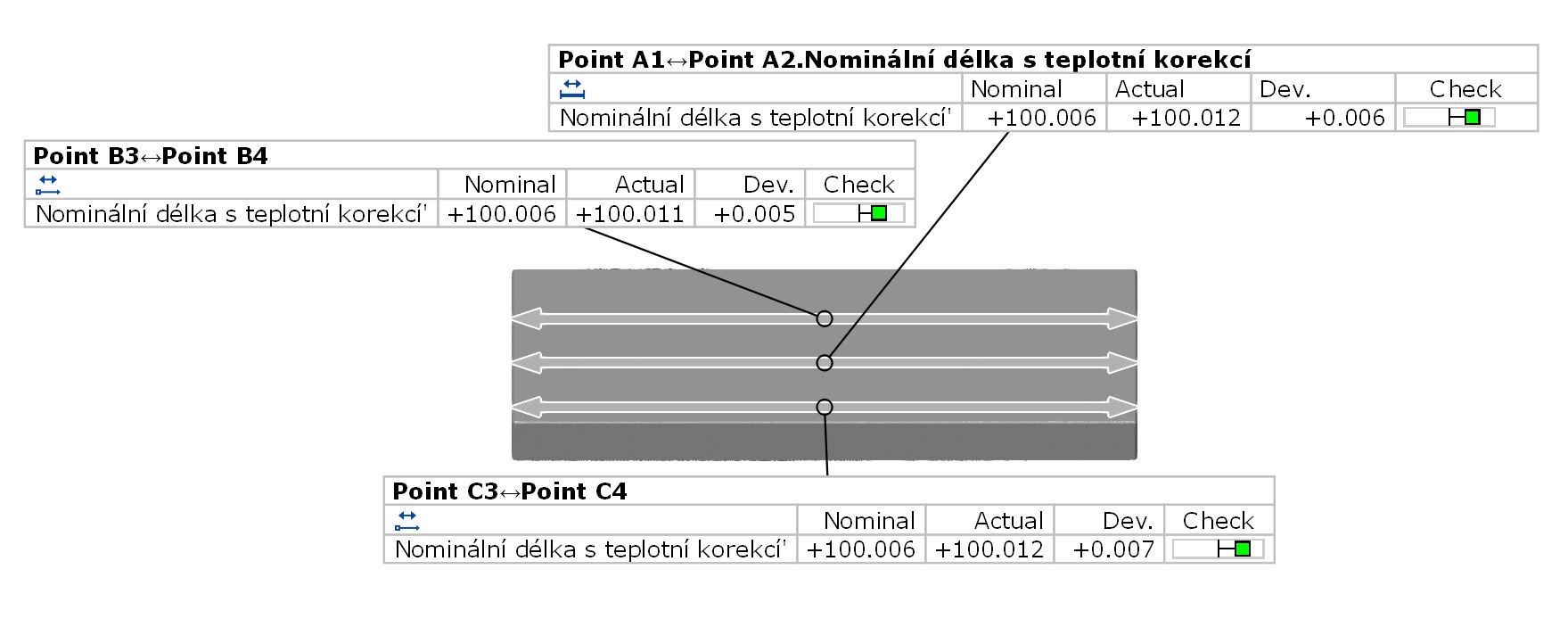
Commentary on the results
Evaluation of the measurements of the ABP-G permanent solution spray layer at 3 different benchmark locations showed and confirmed the data that the applied layer is in the units of microns. In the analyzed length, the layer is on both opposite surfaces, so to obtain the layer thickness on one side we have to divide the deviation from the nominal length (Dev.) by two. As with AB6-G, the variability of the 10 measurement values is influenced by the human factor when applying the layer with the airbrush gun (see following figure).
Figure: Results of 10 separate measurements of the standard after application of AB6-GSUMMARY
The ATTBLIME® portfolio of matting sprays brings to the market a superior alternative to previously used products. They are particularly interesting because of their health safety, the ability to handle the part even after spraying, the possibility to glue dots on the sprayed layer and the excellent sublimation properties. At a very good price, products with a very interesting price/performance ratio are entering the Czech and Slovak market, which will find application in professional 3D scanning in many areas.
Don't miss anything

20+ years of experience

High end technology

Data security

Tailor-made solutions


